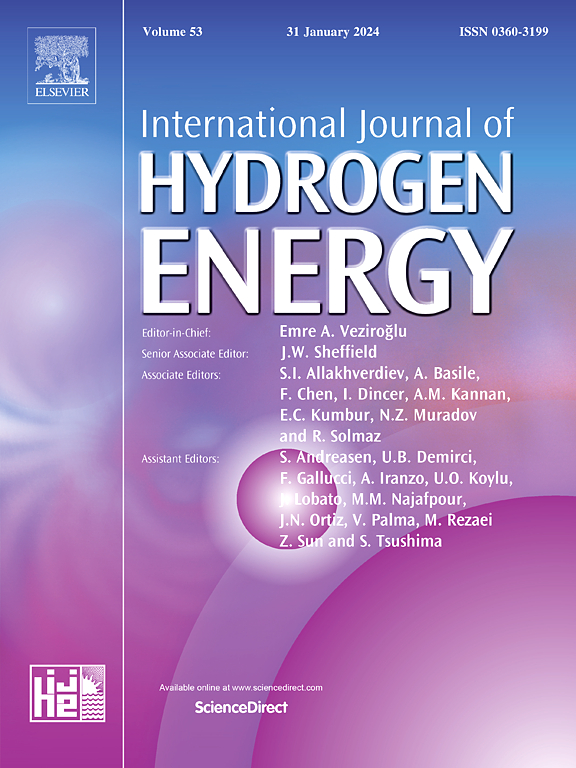Effect of hydrogen on nickel extraction from low-grade ultramafic nickel sulfide concentrate
IF 8.1
2区 工程技术
Q1 CHEMISTRY, PHYSICAL
引用次数: 0
Abstract
Low-grade ultramafic nickel sulfide ores represent an important but underutilized resource for nickel production. However, their high MgO content poses significant challenges to conventional smelting processes, limiting their economic and environmental viability. The authors proposed a solid-state nickel extraction method, employing metallic iron as a nickel extractant under inert or H2–Ar atmospheres, to avoid high-temperature smelting and enable direct extraction of nickel as ferronickel. Although hydrogen was present in the atmosphere, the authors observed the loss of iron into iron-magnesium oxides and silicates. The aim of the current work is to understand the mechanism of iron oxidation and the effect of atmosphere on it. It was found that hydrogen helps create a low oxygen potential environment around the sample (logPO2 = −22 to −17 at 750–920 °C), but oxygen-buffering minerals in the ultramafic concentrate create local oxidizing conditions, leading to the oxidation of iron. Kinetic analysis reveals that hydrogen reduction of iron oxide in the complex compounds with MgO and sulfides is hindered by high activation energy barriers (Ea = 240 kJ/mol). These findings highlight critical factors affecting the efficiency of hydrogen-based reductio in complex mineral matrices.
氢对低品位超镁铁性硫化镍精矿提镍的影响
低品位超镁铁性硫化镍矿是镍生产中一种重要但未得到充分利用的资源。然而,它们的高MgO含量对传统冶炼工艺构成了重大挑战,限制了它们的经济和环境可行性。作者提出了一种固态萃取镍的方法,在惰性或H2-Ar气氛下,以金属铁作为萃取剂,避免高温冶炼,使镍作为镍铁直接萃取。虽然大气中存在氢,但作者观察到铁的损失变成了铁镁氧化物和硅酸盐。本研究的目的是了解铁氧化的机理和大气对其的影响。研究发现,氢有助于在样品周围创造一个低氧势环境(750-920℃时logPO2 = - 22至- 17),但超镁铁精矿中的氧气缓冲矿物创造了局部氧化条件,导致铁氧化。动力学分析表明,氧化铁在MgO和硫化物络合物中的氢还原受到高活化能垒(Ea = 240 kJ/mol)的阻碍。这些发现突出了影响复杂矿物基质中氢基还原效率的关键因素。
本文章由计算机程序翻译,如有差异,请以英文原文为准。
求助全文
约1分钟内获得全文
求助全文
来源期刊

International Journal of Hydrogen Energy
工程技术-环境科学
CiteScore
13.50
自引率
25.00%
发文量
3502
审稿时长
60 days
期刊介绍:
The objective of the International Journal of Hydrogen Energy is to facilitate the exchange of new ideas, technological advancements, and research findings in the field of Hydrogen Energy among scientists and engineers worldwide. This journal showcases original research, both analytical and experimental, covering various aspects of Hydrogen Energy. These include production, storage, transmission, utilization, enabling technologies, environmental impact, economic considerations, and global perspectives on hydrogen and its carriers such as NH3, CH4, alcohols, etc.
The utilization aspect encompasses various methods such as thermochemical (combustion), photochemical, electrochemical (fuel cells), and nuclear conversion of hydrogen, hydrogen isotopes, and hydrogen carriers into thermal, mechanical, and electrical energies. The applications of these energies can be found in transportation (including aerospace), industrial, commercial, and residential sectors.
 求助内容:
求助内容: 应助结果提醒方式:
应助结果提醒方式:


